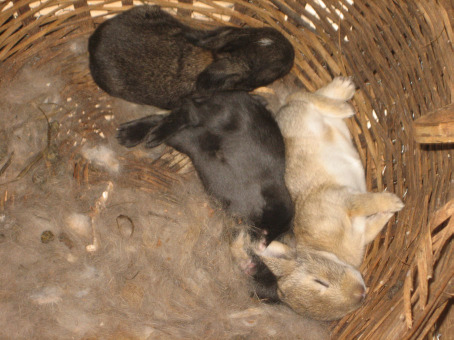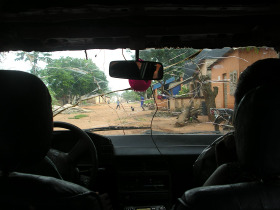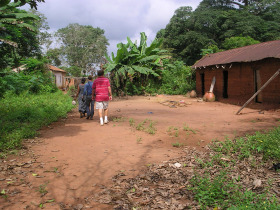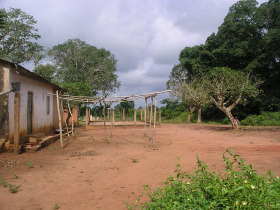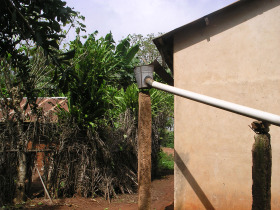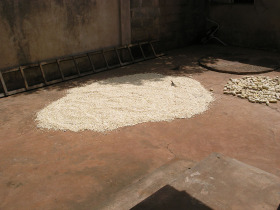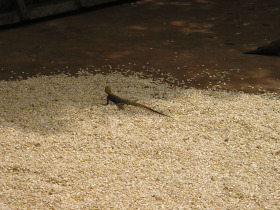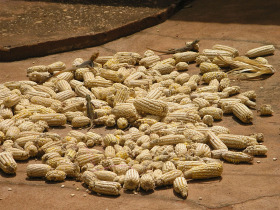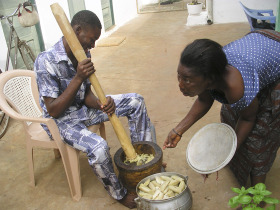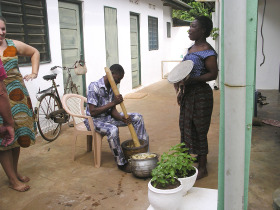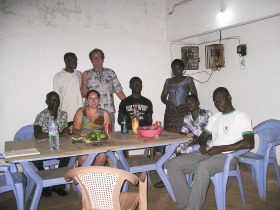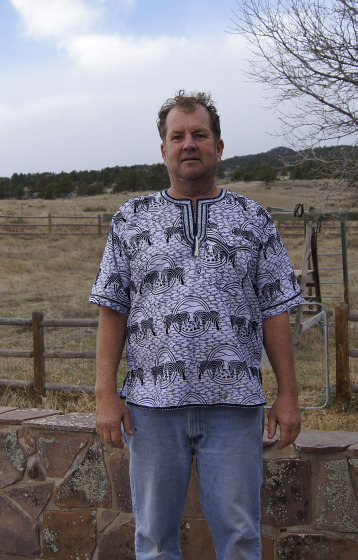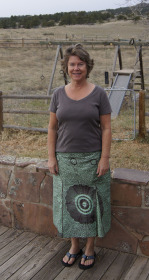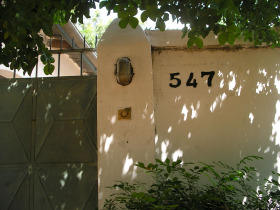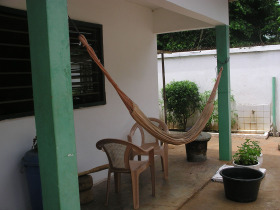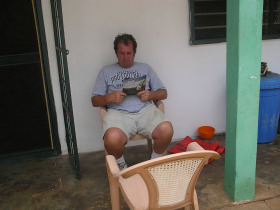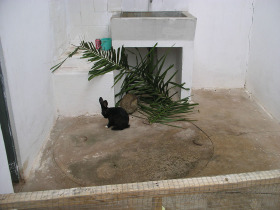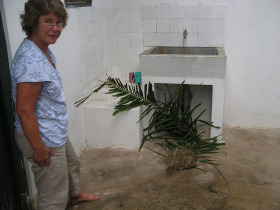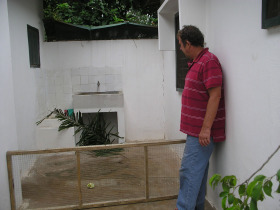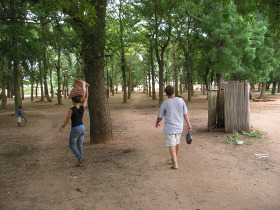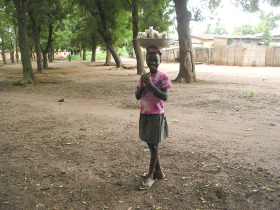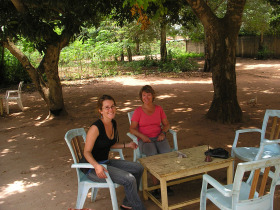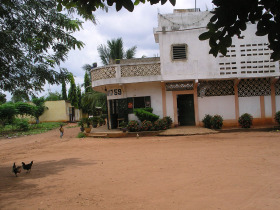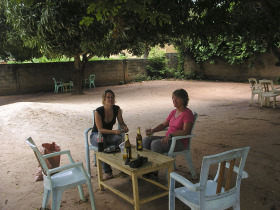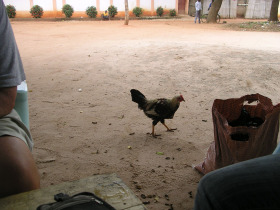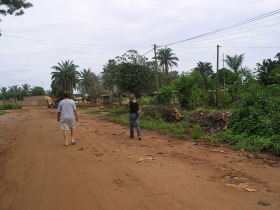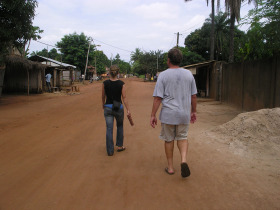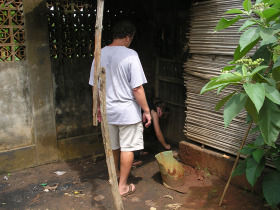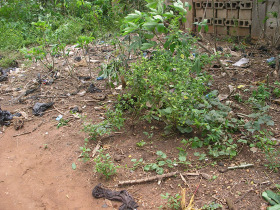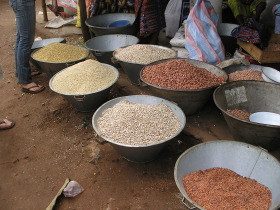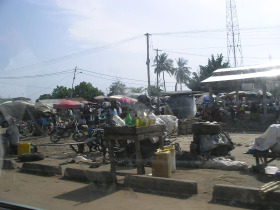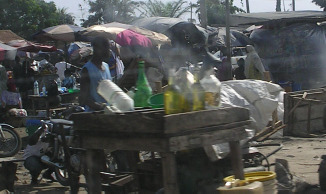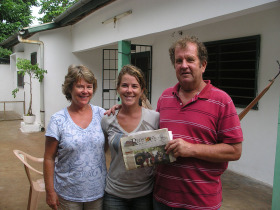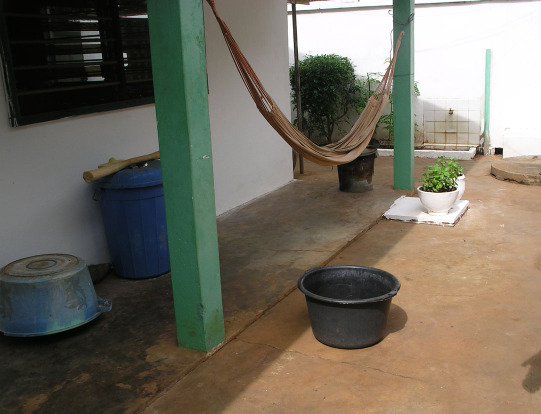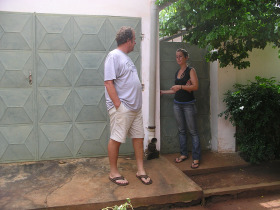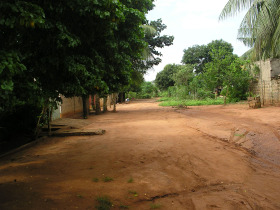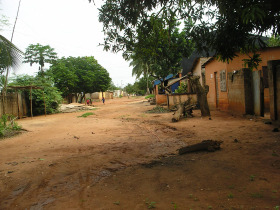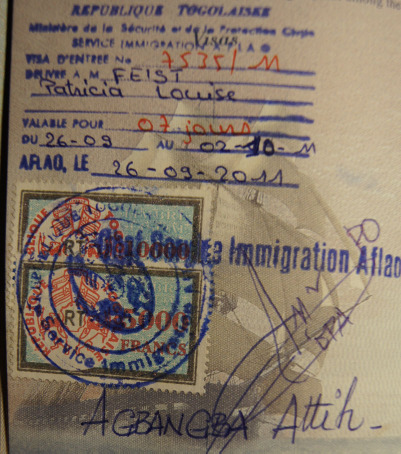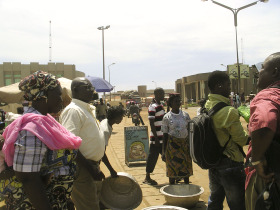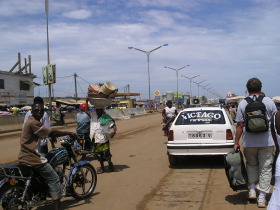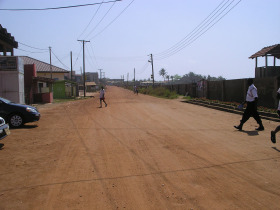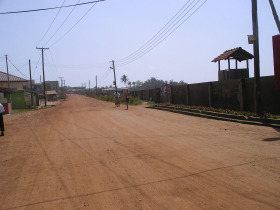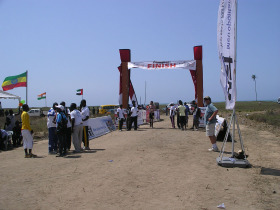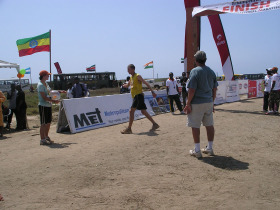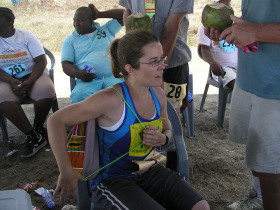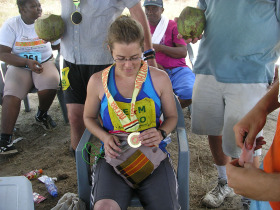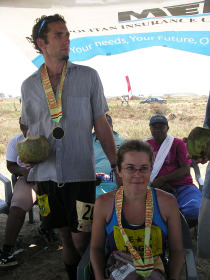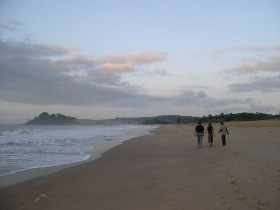Saturday morning we had breakfast at the hotel: good omelets, and some croissants that Tammy got from a place down the street, real coffee. While in the hotel restaurant, we saw Chris and Rachel, PC volunteers who are stationed north of Tsevie. (We had met Chris before at the marathon.) Freshly showered, Chris and Rachel would soon leave for the long trip up north to the villages that they are stationed in.
The hotel was close to the Togo-Ghana border, so we rolled our bags along the sidewalk next to the beach. At the border, we got through the typical passport/visa border rituals, and then walked to the tro-tro station.
This time, we found an actual bus to take us to Accra. It was large, pretty new, clean, had good shocks, had seat belts, and even a DVD screen. It sat probably 20 people. It took awhile to fill this bus - probably 45 minutes - before we could leave. During this time, of course the vendors are trying to sell us stuff.
One woman gets on the bus and in her bag is a chicken. Could that really be what I saw? Why yes, it soon squawked, proving it was there. What's a trip to Africa without a chicken on a bus?
A little later we hear the apprentice arguing with one of the women on the bus. It went on for awhile. Finally they stopped arguing, and started stuffing a large matress onto the bus. Most of the people on the bus started laughing! This was rare, usually everyone just sat and endured whatever was happening.
So they get the mattress on, and it's right in front of John, kind of vertical. For a long time, the driver played the same irritating music tape over and over. Then he put on a DVD, on a screen that John couldn't see because of the mattress (no loss). The movie was locally produced and about a village and killings and witchcraft. Tammy says that this type of melodramatic film is quite popular.
The driver didn't drive too fast, amazing. But the bus kept getting stopped by the Ghana police, who repeatedly pulled this one guy off the bus for questioning. The police carried guns, by the way. AK47s. Each time, the police checked this guy's papers and then his bags in the back of the bus. Probably, each time the guy had to pay a bribe. Tammy said he was either Nigerian or a rastafarian.
One time the bus stopped, and everyone started getting off. Finally I figured that this is a "rest" stop. So I followed Tammy to the "restroom". So far on the trip, when out in public I had always used a restaurant or bar's toilet facility. And except for once, that meant an actual toilet. Only once was it a "urinal", and that time, it was a private urinal. A woman's urinal room is a tiled room, and along one side there is a trough. You are supposed to pull down your pants, squat down, and direct your pee into the trough. This time, I follow Tammy into the restroom facility, and plunk down a coin and am directed to a room that was a urinal. There are about 10 women there peeing. They are all wearing dresses. I start to pull down my pants and then just can't do it. I went back out and paid more money and was directed to a real toilet. (Men in west Africa often just pee in the street, in the open.)
We hit traffic about 10 miles out of Accra. One time, there was an accident causing the traffic, other times it was just volume. Our flight doesn't leave until 11 pm, so we aren't in a big hurry for that, but Tammy had an errand to run for her PC site mate, Becky. Becky supposedly has a pet carrier waiting for her at a certain pet store in Accra and supposedly the pet store closes at 3 pm. (Becky has a dog that she wants to bring home with her to America in a few weeks.)
Tammy looked at a map and figured the general area of Accra the pet store must be in, and asked others in the bus where to get off. Before we are in the heart of Accra, the bus stops, and someone on the bus told her that this is our stop. People in Ghana are really helpful. We found a taxi, and the driver helped us find the pet store, even calling the pet store on his phone and asking strangers inside a local business. Again, helpful people.
We arrived at the pet store at about 2:30 pm. But they didn't have a pet carrier. The salesgirl called her boss. Finally by about 5:30 pm, the boss came. In the meantime, we had drinks at a bar and then dinner across the street from the pet store. The time was well spent, as we were all together, enjoying food, drink, and conversation.
When the boss came with the pet carrier, he told us that he didn't take Tammy's Visa card (the whole point was that he was supposed to take Visa while Becky had been there and they didn't take Mastercard). The guy was really nice, though, and offered to take us to an ATM so she could withdraw cash. Then, he drove us directly to the airport. That was awfully nice. We all got out and went inside the terminal.
Tearfully, we said good bye to Tammy.
John and I went to catch our plane for Dulles. Our plane left at 11:15 pm. As the plane rose off the runway, I gazed down at nighttime Africa, pale orange lights spotted through the city, and then just large areas of darkness.
Next: Africa, last impressions.
